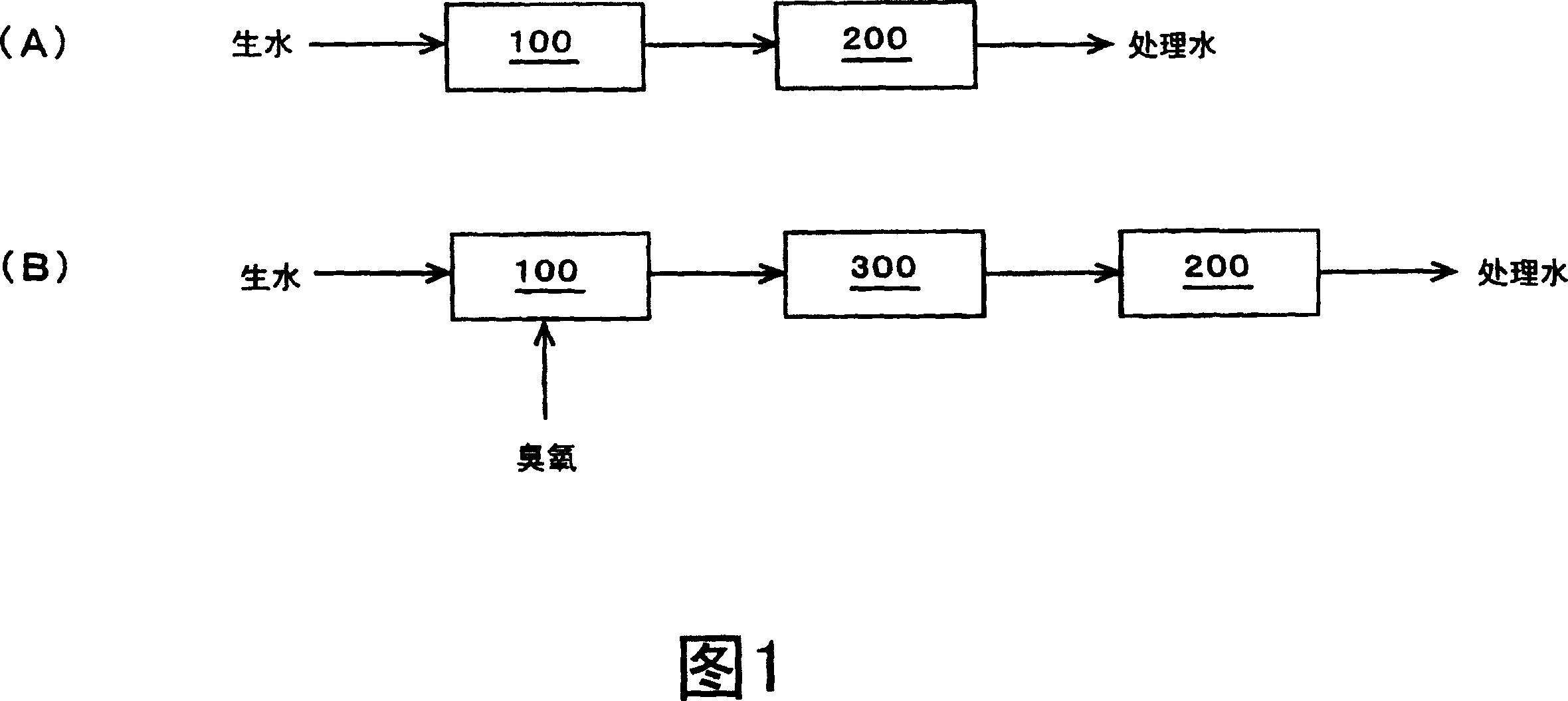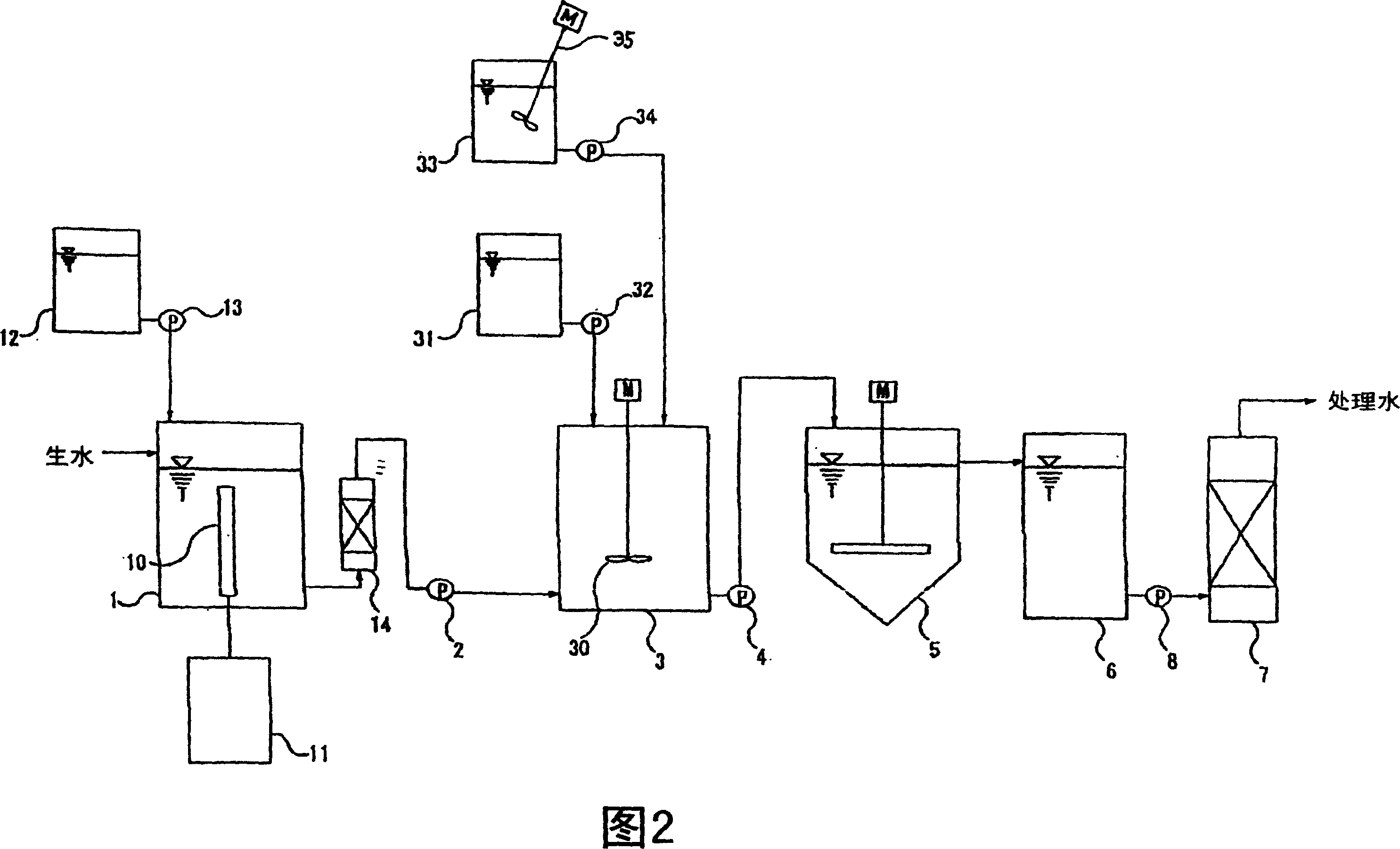Method for treating water containing organic arsenic
A treatment method and technology for organic arsenic, which are applied in the treatment of polluted groundwater/leachate, light water/sewage treatment, oxidized water/sewage treatment, etc. problem, to achieve the effect of preventing drinking water pollution
- Summary
- Abstract
- Description
- Claims
- Application Information
AI Technical Summary
Problems solved by technology
Method used
Image
Examples
Embodiment 1
[0084] (unboiled water)
[0085] Water from local wells is used as raw water. Table 1 shows the analysis results of diphenylarsinic acid, which is organic arsenic in raw water. Raw water does not contain inorganic arsenic.
[0086] Analysis value (mg / L)
Diphenylarsinic acid
0.02~0.03 (average value 0.025)
[0087] (Analysis method and lower limit of quantification of diphenylarsine)
[0088] Analytical method: analyzed by solvent extraction-GC / MS
[0089] Lower limit of quantitation: 0.001mg / L
[0090] (photooxidation treatment)
[0091] The raw water above was subjected to photooxidation treatment according to the recipes of experiments 1-1 to 10 shown in Table 2. In the photooxidation tank, air or ozone is supplied from below and aeration and stirring are performed. The supply rate of air or ozone is 2.0 L / min.
[0092] In the experiment of adding ozone, the addition amount was 0.375 mg / L, and the ozone addition amount per hour was 0.375×...
Embodiment 2
[0105] The treated water photolyzed in Example 1 was subjected to the following coagulation treatment. The processing method including coagulant, addition amount, coagulation time and settling time is shown in Figure 3.
[0106] Next, the concentration of diphenylarsinic acid and the concentration of arsenic were measured for the treated water before the coagulation treatment after the photooxidation raw water and the treated water after the coagulation treatment. Analytical method is identical with embodiment 1. The analysis results of the treated water are shown in Table 5.
[0107] Arsenic analysis value (mg / L)
raw water
0.02~0.03 (average value 0.025)
experiment
1-1
ozone aeration
After photooxidation
Diphenylarsinic acid
Below the detection limit
0.030
After agglutination
Diphenylarsinic acid
Below the detection limit
Below the det...
Embodiment 3
[0112] Embodiment 1 and embodiment 2 are experiments on the treatment of raw water containing low-concentration organic arsenic (0.02-0.03mg / L), and this embodiment 3 is an experiment to study the appropriate addition amount of oxidant during medium concentration and high concentration .
[0113] In the treatment experiment, groundwater with an organic arsenic content of 0.6-0.7 mg / L was used to carry out photooxidation treatment according to the formula shown in Table 6 below. Ozone aeration and stirring are carried out in the photooxidation tank.
[0114]
[0115] Table 7 shows the results of the above processing. Table 7 shows the analysis results of the total arsenic concentration in the treated water after the photooxidation treatment.
[0116] Experiment number
[0117] From the above results, it can be seen that when the concentration of raw water increases, even if the analysis results of the treated water after photooxidation treatment are seen, ...
PUM
| Property | Measurement | Unit |
|---|---|---|
| decomposition efficiency | aaaaa | aaaaa |
Abstract
Description
Claims
Application Information
 Login to View More
Login to View More - R&D
- Intellectual Property
- Life Sciences
- Materials
- Tech Scout
- Unparalleled Data Quality
- Higher Quality Content
- 60% Fewer Hallucinations
Browse by: Latest US Patents, China's latest patents, Technical Efficacy Thesaurus, Application Domain, Technology Topic, Popular Technical Reports.
© 2025 PatSnap. All rights reserved.Legal|Privacy policy|Modern Slavery Act Transparency Statement|Sitemap|About US| Contact US: help@patsnap.com



